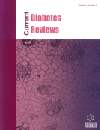
Full text loading...
We use cookies to track usage and preferences.I Understand
The epidemic of diabetes continues to be an increasing problem, and there is a need for new therapeutic strategies. There are several promising drugs and molecules in synthetic medicinal chemistry that are developing for diabetes. In addition to this approach, extensive studies with gene and cell therapies are being conducted. Gene therapy is an existing approach in treating several diseases, such as cancer, autoimmune diseases, heart disease and diabetes. Several reports have also suggested that stem cells have the differentiation capability to functional pancreatic beta cell development in vitro and in vivo, with the utility to treat diabetes and prevent the progression of diabetes-related complications. In this current review, we have focused on the different types of cell therapies and vector-based gene therapy in treating or preventing diabetes.

Article metrics loading...

Full text loading...
References


Data & Media loading...

